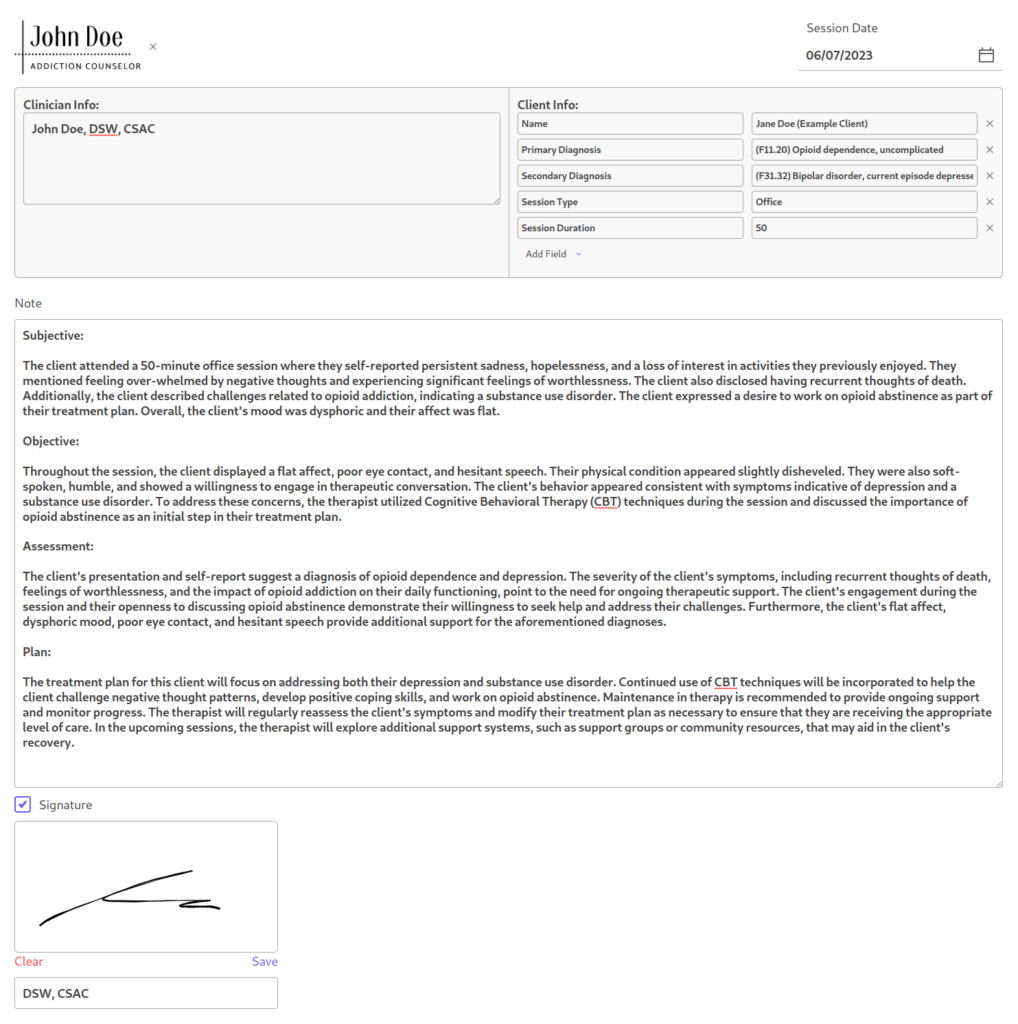How to Write a Mental Health SOAP Note
What is a SOAP Note?
Writing a mental health SOAP note (Subjective, Objective, Assessment, and Plan) is a common method behavioral healthcare professionals use to document patient encounters and ensure continuity of care. SOAP notes should be concise, objective, and focused on “medical necessity.” They should accurately capture the client's condition, treatment plan (goals, objectives, and interventions), and progress to ensure proper communication and continuity of care. It's always a good idea to familiarize yourself with any specific documentation requirements set by your institution, payers, and regulators (governing and credentialing bodies).
What Should a SOAP Note Include?
Here's a breakdown of what data should typically be included in each field:
Subjective:
What is the presenting problem: Briefly describe the reason for the visit, the patient's main concerns, and any relevant symptoms they report.History of the present illness: Gather information about the onset, duration, and progression of symptoms, as well as any factors that may have contributed to the current condition.Mental status examination: Include a summary of the patient's appearance, behavior, mood, affect, thought content, cognition, and any other relevant observations made during the session.Patient's self-reported symptoms and experiences: Document the patient's own account of their symptoms, their impact on daily functioning, and any changes since the last session.Psychosocial history: Gather information about the patient's personal, social, and occupational history, including relationships, education, employment, and significant life events.
Objective:
Observations: Document any observable behaviors or physical manifestations observed during the session.Test results: Include relevant laboratory tests, outcome measurement data, and assessment results related to the patient's mental health condition.
Assessment:
Diagnosis: Provide a clear and concise summary of the patient's mental health diagnosis(es) based on the DSM-5 (Diagnostic and Statistical Manual of Mental Disorders) criteria or other applicable diagnostic guidelines.Clinical impressions: Consider the subjective and objective information gathered to evaluate the patient's mental health status comprehensively. Include insights into the severity, impact on functioning, and any pertinent risk factors.Differential diagnosis: List other potential diagnoses that were considered but ruled out based on the available information.Prognosis: Provide an assessment of the expected course of the patient's condition and potential outcomes.
Plan:
Treatment plan: Outline the recommended interventions, therapies, or medications, along with the rationale behind each choice.Goals: Set specific, measurable, achievable, relevant, and time-bound (SMART) goals that align with the patient's treatment needs.Follow-up: Specify the frequency of future appointments or evaluations.Referrals: If applicable, indicate any necessary referrals to other healthcare providers or specialists.Safety concerns: Note any safety considerations, such as potential risks, warning signs, or protective measures.
SOAP Note Examples:
AutoNotes allows clinicians to create Mental Health SOAP Notes in less than 60 seconds. Check out some SOAP Note Examples below, or start your free trial now to write unlimited Mental Health SOAP Notes for free. For more output examples and other formats, please check out our Templates page.

AutoNotes makes documentation fast, easy, and stress-free — so you can focus on what matters, your clients.



